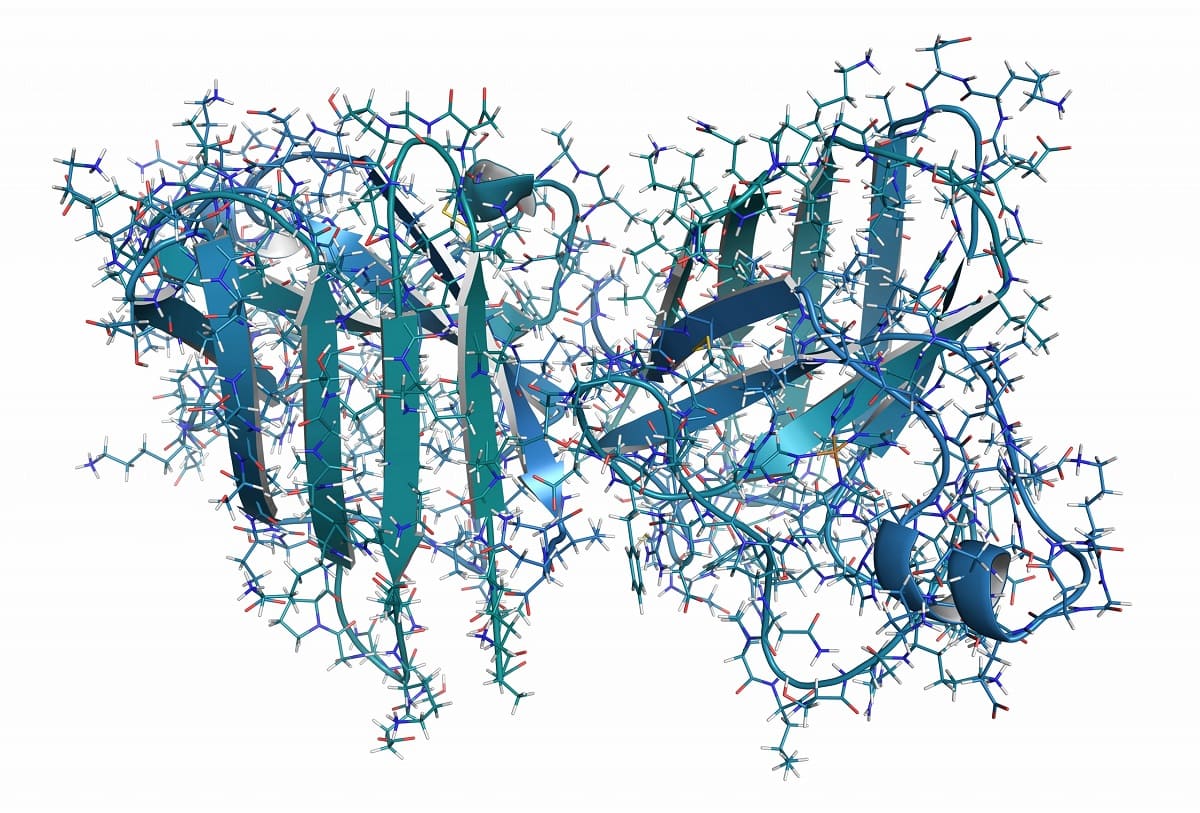Home>Science & Environment>Enzyme Denaturation At Low Temperatures: What You Need To Know


Science & Environment
Enzyme Denaturation At Low Temperatures: What You Need To Know
Published: March 5, 2024
Learn about the effects of low temperatures on enzyme denaturation and its implications for the environment. Explore the science behind this phenomenon and its significance in environmental studies.
(Many of the links in this article redirect to a specific reviewed product. Your purchase of these products through affiliate links helps to generate commission for Temperatures.com, at no extra cost. Learn more)
Table of Contents
Understanding Enzyme Denaturation
Enzymes, the remarkable catalysts of biological systems, play a pivotal role in facilitating biochemical reactions essential for life. However, these intricate proteins are susceptible to denaturation, a process that alters their structure and consequently impairs their functionality. Understanding enzyme denaturation is crucial in comprehending the impact of low temperatures on enzymatic activity.
Enzyme denaturation involves the disruption of the intricate three-dimensional structure of the protein, leading to the loss of its biological activity. This process can be triggered by various factors, including temperature fluctuations, pH changes, and exposure to certain chemicals. However, in the context of low temperatures, enzymes are particularly vulnerable to denaturation, as the kinetic energy of the molecules decreases, resulting in reduced molecular motion and potentially destabilizing the enzyme structure.
At low temperatures, enzymes experience decreased molecular motion, which can lead to reduced flexibility and increased susceptibility to denaturation. The intricate folding patterns and spatial arrangements of the enzyme's active site, essential for substrate binding and catalysis, can be disrupted under these conditions. As a result, the enzyme may lose its ability to effectively interact with substrates, ultimately compromising its catalytic function.
Furthermore, the impact of low temperatures on enzyme denaturation extends beyond the immediate structural alterations. The conformational changes induced by low temperatures can also affect the overall stability and integrity of the enzyme, potentially leading to irreversible damage. This highlights the delicate balance of factors that contribute to enzyme stability and underscores the significance of understanding the underlying mechanisms of denaturation.
In summary, comprehending the intricacies of enzyme denaturation at low temperatures is essential for elucidating the challenges associated with preserving enzymatic activity in cold environments. By delving into the molecular dynamics and structural vulnerabilities of enzymes under these conditions, researchers can develop strategies to mitigate denaturation and preserve the functionality of these vital biological catalysts.
Read more: Peru’s Climate: What You Need To Know
Effects of Low Temperatures on Enzyme Structure
Low temperatures exert profound effects on the structural integrity of enzymes, influencing their functionality and overall stability. As enzymes are intricate protein molecules, their structure is intricately linked to their catalytic activity. When subjected to low temperatures, enzymes undergo significant structural alterations that can compromise their biological function.
At low temperatures, the kinetic energy of molecules decreases, resulting in reduced molecular motion. This reduction in molecular motion can have a substantial impact on the structural dynamics of enzymes. Enzyme molecules, which rely on a delicate balance of flexibility and rigidity for optimal function, may experience decreased flexibility at lower temperatures. The intricate folding patterns and spatial arrangements of the enzyme's active site, crucial for substrate binding and catalysis, can be disrupted under these conditions. This reduction in flexibility can impede the enzyme's ability to effectively interact with substrates, thereby hindering its catalytic function.
Moreover, low temperatures can lead to changes in the hydrogen bonding and hydrophobic interactions that stabilize the enzyme's three-dimensional structure. These interactions are essential for maintaining the native conformation of the enzyme. However, at lower temperatures, the weakening of these stabilizing forces can result in alterations to the enzyme's structure, potentially leading to denaturation. The disruption of the enzyme's native conformation can have far-reaching consequences, as it may compromise the enzyme's ability to recognize and bind to its substrate, ultimately impacting its catalytic efficiency.
Furthermore, the impact of low temperatures on enzyme structure extends beyond the immediate alterations in folding patterns and stabilizing interactions. The conformational changes induced by low temperatures can also affect the overall stability and integrity of the enzyme. This can result in a decrease in the enzyme's thermal stability, making it more susceptible to denaturation and irreversible damage.
In summary, the effects of low temperatures on enzyme structure are multifaceted, encompassing alterations in flexibility, stabilizing interactions, and overall stability. Understanding these structural changes is crucial for elucidating the challenges associated with preserving enzymatic activity in cold environments and devising strategies to mitigate the detrimental impact of low temperatures on enzyme structure and function.
Factors Affecting Enzyme Stability at Low Temperatures
Enzyme stability at low temperatures is influenced by a myriad of factors that collectively determine the resilience of these biological catalysts in cold environments. Understanding the interplay of these factors is crucial for devising strategies to preserve enzymatic activity under such conditions.
-
Protein Structure and Composition: The inherent structural characteristics and amino acid composition of enzymes play a pivotal role in determining their stability at low temperatures. Enzymes with a higher proportion of flexible regions and a greater number of stabilizing interactions, such as hydrogen bonds and disulfide bridges, tend to exhibit enhanced stability in cold environments. Additionally, the presence of specific amino acids, such as proline and glycine, can confer increased flexibility and resilience to temperature-induced structural changes.
-
Hydrophobic Interactions: Hydrophobic interactions, which contribute to the stability of the enzyme's three-dimensional structure, are particularly susceptible to alterations at low temperatures. The weakening of hydrophobic interactions can lead to the exposure of hydrophobic regions within the enzyme, potentially triggering denaturation. Strategies aimed at preserving hydrophobic interactions, such as the use of cryoprotectants, can mitigate the destabilizing effects of low temperatures on enzyme stability.
-
Water Molecules and Solvent Dynamics: The presence of water molecules in the enzyme's microenvironment plays a crucial role in maintaining its structural integrity at low temperatures. Water molecules act as a plasticizer, influencing the flexibility and dynamics of the enzyme structure. However, at low temperatures, the reduced mobility of water molecules can impact the enzyme's hydration shell, potentially affecting its stability. Understanding the intricate interplay between water dynamics and enzyme stability is essential for preserving enzymatic activity in cold conditions.
-
Conformational Flexibility: The ability of enzymes to undergo conformational changes in response to temperature variations is a key determinant of their stability at low temperatures. Enzymes with inherent conformational flexibility may exhibit greater resilience to temperature-induced structural alterations, allowing them to adapt to the cold environment more effectively. Conversely, enzymes with limited conformational flexibility may be more susceptible to denaturation at low temperatures.
-
Cryoprotectants and Stabilizing Agents: The use of cryoprotectants and stabilizing agents presents a promising approach to enhance enzyme stability at low temperatures. Cryoprotectants, such as glycerol and trehalose, can mitigate the detrimental effects of low temperatures by preserving the enzyme's structure and reducing ice crystal formation. Additionally, the incorporation of stabilizing agents, such as osmolytes and chaperone proteins, can bolster the resilience of enzymes in cold environments.
In essence, the stability of enzymes at low temperatures is governed by a complex interplay of structural, environmental, and chemical factors. By unraveling the intricacies of these factors, researchers can develop targeted strategies to preserve enzymatic activity in cold environments, paving the way for applications in biotechnology, medicine, and environmental science.
Consequences of Enzyme Denaturation at Low Temperatures
Enzyme denaturation at low temperatures can have profound implications for various biological processes and practical applications. The structural alterations induced by low temperatures can lead to a cascade of consequences that impact enzymatic activity and overall cellular function.
One of the primary consequences of enzyme denaturation at low temperatures is the impairment of catalytic efficiency. Enzymes, essential for catalyzing biochemical reactions, rely on their intricate three-dimensional structure for optimal functionality. However, when subjected to low temperatures, the disruption of stabilizing interactions and conformational changes can compromise the enzyme's active site, hindering its ability to effectively bind to substrates and facilitate chemical transformations. This reduction in catalytic efficiency can impede essential metabolic pathways and cellular processes, ultimately impacting the overall physiological function of the organism.
Furthermore, the consequences of enzyme denaturation extend beyond the immediate loss of catalytic activity. In biological systems, enzymes often serve as regulatory components, modulating the rate and specificity of biochemical reactions. However, when denatured at low temperatures, enzymes may lose their regulatory capacity, leading to dysregulation of key metabolic pathways and signaling cascades. This dysregulation can disrupt cellular homeostasis and compromise the organism's ability to respond to environmental stimuli and physiological demands.
Moreover, the repercussions of enzyme denaturation at low temperatures are not confined to biological systems alone. In various industrial and biotechnological applications, enzymes are utilized for their catalytic prowess in processes such as food production, pharmaceutical manufacturing, and biofuel synthesis. However, the denaturation of enzymes in cold environments can jeopardize the efficiency and reliability of these processes, leading to decreased product yields and increased operational costs.
Additionally, the consequences of enzyme denaturation at low temperatures have implications for environmental and ecological systems. Cold environments, such as polar regions and high-altitude ecosystems, harbor diverse microbial communities that rely on enzymatic activity for nutrient cycling and organic matter degradation. The denaturation of enzymes in these environments can disrupt crucial ecological processes, potentially impacting nutrient availability, carbon sequestration, and overall ecosystem dynamics.
In summary, the consequences of enzyme denaturation at low temperatures encompass a wide spectrum of biological, industrial, and environmental implications. Understanding these consequences is essential for devising strategies to mitigate the impact of low temperatures on enzymatic activity and developing innovative approaches to preserve enzyme functionality in cold environments. By addressing the challenges posed by enzyme denaturation, researchers can unlock new opportunities for biotechnological advancements, environmental stewardship, and the sustainable utilization of cold ecosystems.
Strategies to Preserve Enzyme Activity at Low Temperatures
Preserving enzyme activity at low temperatures presents a significant challenge with far-reaching implications for various fields, including biotechnology, medicine, and environmental science. To address this challenge, researchers have explored a diverse array of strategies aimed at mitigating the detrimental effects of low temperatures on enzymatic function. These strategies encompass innovative approaches to stabilize enzyme structure, enhance catalytic efficiency, and facilitate the application of enzymes in cold environments.
Cryoprotectants and Stabilizing Agents
One of the prominent strategies for preserving enzyme activity at low temperatures involves the use of cryoprotectants and stabilizing agents. Cryoprotectants, such as glycerol, trehalose, and polyethylene glycol, serve to mitigate the damaging effects of low temperatures by preserving the native structure of enzymes and reducing ice crystal formation. These compounds act as molecular shields, safeguarding the enzyme's conformation and functionality in cold environments. Additionally, the incorporation of stabilizing agents, including osmolytes and chaperone proteins, can bolster the resilience of enzymes, offering protection against temperature-induced denaturation and enhancing their stability at low temperatures.
Protein Engineering and Directed Evolution
Advancements in protein engineering and directed evolution have paved the way for the development of enzymes with enhanced stability and activity at low temperatures. Through rational design and mutagenesis, researchers can modify the amino acid composition and structural features of enzymes to confer increased resilience to temperature-induced denaturation. Directed evolution techniques, such as error-prone PCR and DNA shuffling, enable the generation of enzyme variants with improved cold tolerance, thereby expanding the repertoire of enzymes suitable for cold-temperature applications.
Structural Modification and Immobilization
Structural modification techniques, such as site-directed mutagenesis and disulfide bond engineering, offer avenues to enhance the stability of enzymes in cold environments. By introducing specific structural alterations, such as cross-linking residues or modifying active site architecture, researchers can fortify the enzyme's structure against temperature-induced destabilization. Furthermore, the immobilization of enzymes onto solid supports or encapsulation within protective matrices can shield them from the adverse effects of low temperatures, prolonging their activity and enabling their utilization in cold-temperature bioprocesses.
Cold-Adapted Enzymes and Bioprospecting
The exploration of cold-adapted enzymes from extremophilic organisms, thriving in frigid environments, holds promise for expanding the repertoire of enzymes suited for low-temperature applications. Bioprospecting endeavors in polar regions, deep-sea habitats, and high-altitude ecosystems have unveiled a rich diversity of cold-adapted enzymes with inherent cold tolerance and catalytic efficiency. Harnessing these enzymes, which have evolved to function optimally in cold environments, offers a sustainable approach to preserving enzymatic activity at low temperatures and unlocking novel biotechnological applications in cold-temperature settings.
In essence, the pursuit of strategies to preserve enzyme activity at low temperatures encompasses a multidisciplinary approach, integrating principles of biochemistry, protein engineering, and environmental adaptation. By harnessing these strategies, researchers can surmount the challenges posed by low temperatures and pave the way for the sustainable utilization of enzymes in cold environments, thereby fostering advancements in biotechnology, medicine, and environmental stewardship.














